The Tasmanian Food & Wine conservatory is a cafe/providore, promoting Tasmanian food and wine from all across the state but especially supporting boutique and small producers as well as more widely known brands. 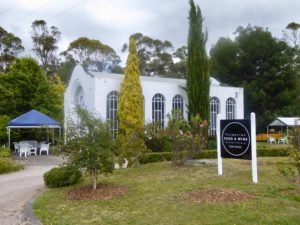 It was once a greenhouse built over 40 years ago by a Devonport man – primarily to house his grand piano. A local mother and daughter fell in love with the building and after 10 years of negotiating finally bought it. It is now decked out with golden timber floors and streams of natural light, ceilings fans and cane furniture give it a tropical Cuban style atmosphere.
It was once a greenhouse built over 40 years ago by a Devonport man – primarily to house his grand piano. A local mother and daughter fell in love with the building and after 10 years of negotiating finally bought it. It is now decked out with golden timber floors and streams of natural light, ceilings fans and cane furniture give it a tropical Cuban style atmosphere. 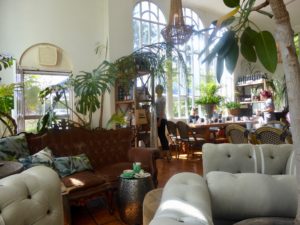 It opened in 2015 and has never looked back. The grand piano was still there and whilst we were there a fellow diner asked if he could play it. He was obviously an accomplished pianist and he entertained us for the next 20 minutes with beautiful classical music.
It opened in 2015 and has never looked back. The grand piano was still there and whilst we were there a fellow diner asked if he could play it. He was obviously an accomplished pianist and he entertained us for the next 20 minutes with beautiful classical music.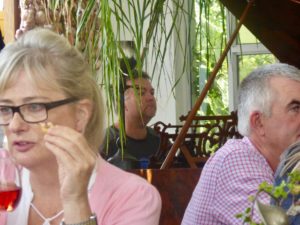 Their concept had always been to develop it into a showcase for Tasmanian produce with seasonality playing a big part in the menu.
Their concept had always been to develop it into a showcase for Tasmanian produce with seasonality playing a big part in the menu. 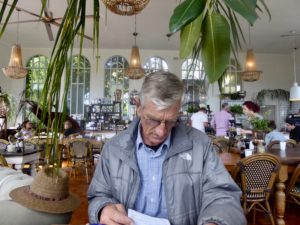
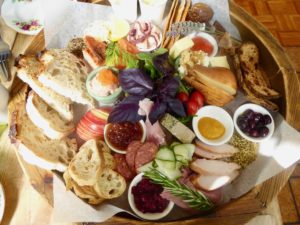 Not only was it all, delicious but you could buy all the ingredients in the shop – which we did!
Not only was it all, delicious but you could buy all the ingredients in the shop – which we did!
Having brunched so well we made our way north in search of the Emu Park Rhododendron Gardens.
Three men and their passion for the genus Rhododendron conceived the Emu Valley Rhododendron Garden in 1981. The site was a scrub and blackberry infested hillside and it would have needed imagination and vision to see the potential of the world-class garden it has become. 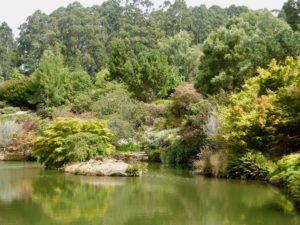
The amphitheater consisting mainly of rich volcanic soil, which has never been farmed. The slope is quite steep into a large stepped basin fed by several natural springs, which form a series of lakes. 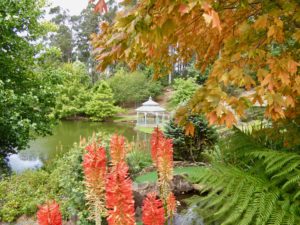 The garden is divided and space allocated to each part of the world in which rhododendrons grow in the wild.
The garden is divided and space allocated to each part of the world in which rhododendrons grow in the wild.  Plants which originated anywhere from the icy Himalayas to tropical New Guinea and across the Pacific to the Americas seem to have adapted to their hillside home.
Plants which originated anywhere from the icy Himalayas to tropical New Guinea and across the Pacific to the Americas seem to have adapted to their hillside home.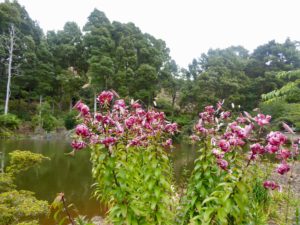
Owned by an independent, non-profit organization, members have achieved most of the development through voluntary effort, which is obviously ongoing as new areas are being opened up as well as the established areas being maintained. Maree’s mother was one of the earlier volunteers and played a big part in the layout of the garden.
The peak time to visit is in October when most of the rhododendrons are flowering, but even in February it was a pleasure to walk around this well laid out garden. An added bonus was that there were very few people visiting whereas October is very busy.
After clambering up and down the hillside, we had some afternoon tea on the balcony overlooking the gardens and communed with Edgar the Elegant Emu before setting off to Harry’s on the Hill, our farm B&B for the next couple of nights.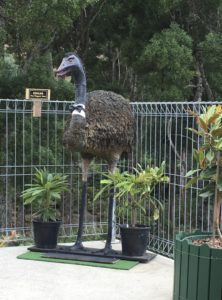
Due to my inability to tell left from right and some rather obscure roads, we circled the area looking with dismay at some of the rather derelict farms on the surrounding hills before finally getting on the right road. Harry’s Farm was a neat and tidy farm with a lovely house sitting high on the hill. The house had been built for Harry’s son and when Harry retired and they moved into the farmhouse it became a very luxurious B&B. Our hosts had stocked the fridge and we spent a relaxed evening reading and occasionally looking up and contemplating the view.

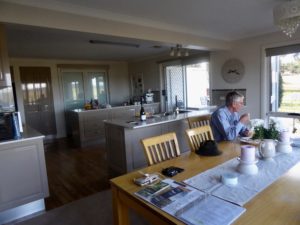
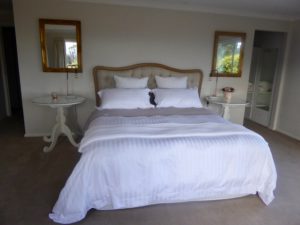
The next morning we were awoken by the cluck of chickens and the sounds of a working farm. Our view up towards Cradle Mountain showed dense cumulonimbus over the mountain and the weather forecast was for 3 degrees, storms and hail so we decided to give Dove Lake a miss and concentrate on some more local attractions. We decided to go to the Villarett Gardens, the Sheffield Murals, the Alum Cliffs and, if time and not too exhausted, the Liffey Falls. Edgar walked the farm but I, contemplating the walking for the day ahead, had a more leisurely start.
Villarett Gardens is the result of the overwhelming passion of two dedicated gardeners. Beginning a garden on the side of a hill with just a few mature holly, beech and oak trees, they have, with skill and hard work, developed a 4 hectare garden of great beauty and well worth visiting.  We started in the arboretum part of the garden. Here single specimen trees of conifers and other striking and unusual trees have been planted so that you can see the tree in its entirety rather than as part of a shrubbery.
We started in the arboretum part of the garden. Here single specimen trees of conifers and other striking and unusual trees have been planted so that you can see the tree in its entirety rather than as part of a shrubbery. 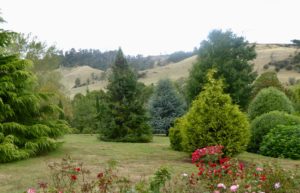 From there we moved on to the more formal part of the garden, where the use of hedges and innovative planting combined with numerous water features and striking sculptures make this a garden full of surprises.
From there we moved on to the more formal part of the garden, where the use of hedges and innovative planting combined with numerous water features and striking sculptures make this a garden full of surprises.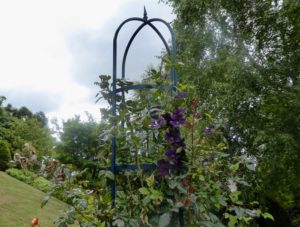
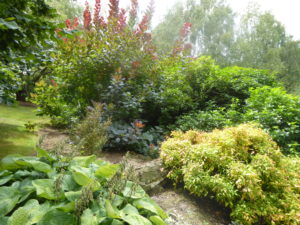
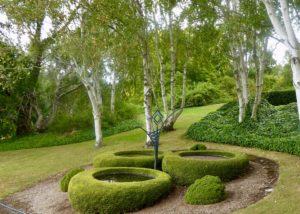
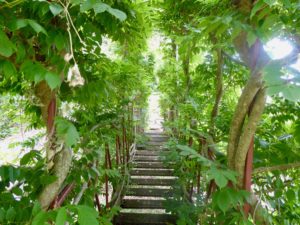
Villarett is a fully licensed café/restaurant with an extensive menu so is an ideal place for lunch before or after your garden wanderings. We decided to keep going as it was a bit too soon after breakfast and I had my eye on the Apple Café in Sheffield, which had some good reviews.
Sheffield is ‘The Town of Murals’ with murals painted on the side and front walls of most of the buildings throughout the town. It is an outdoor art gallery telling the history of the town through art.The first mural was painted by John Lendis in 1986 and was of Gustav Weindorfer,a passionate mountaineer, naturalist and conservationist and the man responsible for having Cradle Mountain/Dove Lake declared a National Park. The scene depicts a passage from his diary.
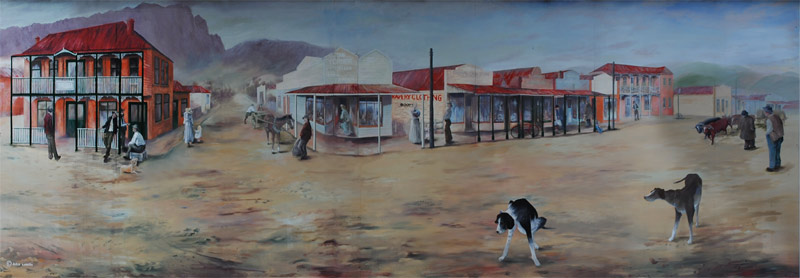
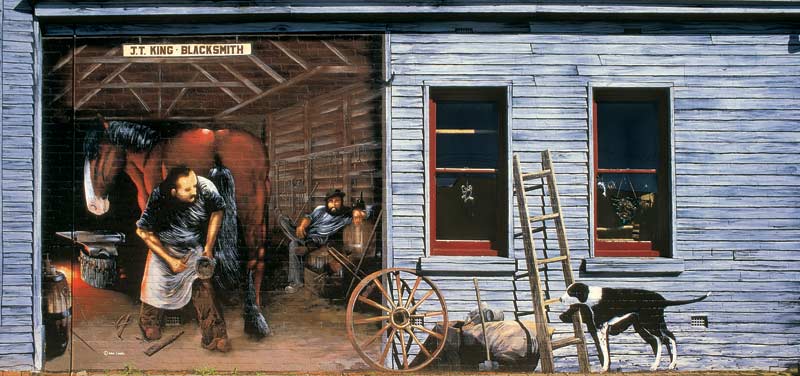
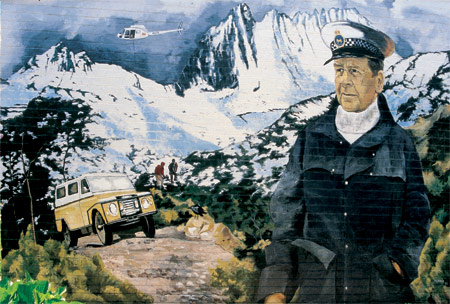
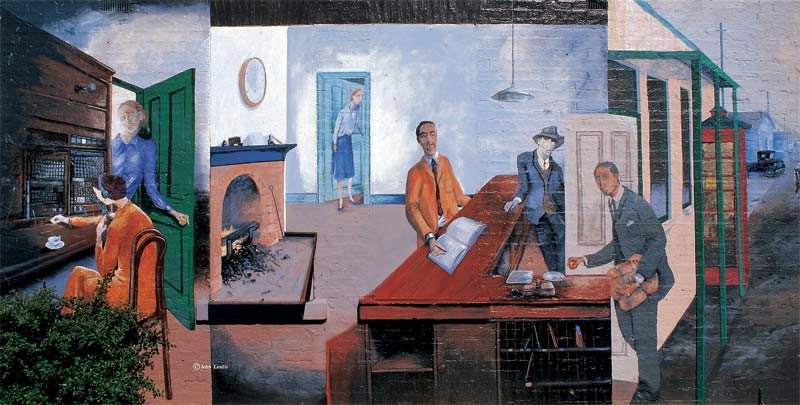 The Post Office in 1930 now a mural on the wall of the Kentish museum which was the old post office
The Post Office in 1930 now a mural on the wall of the Kentish museum which was the old post office
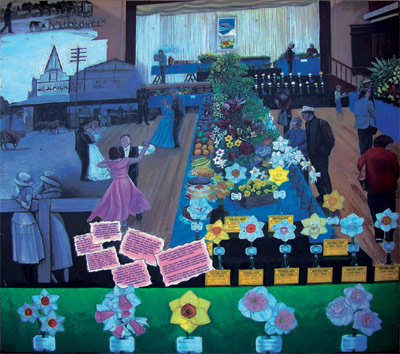
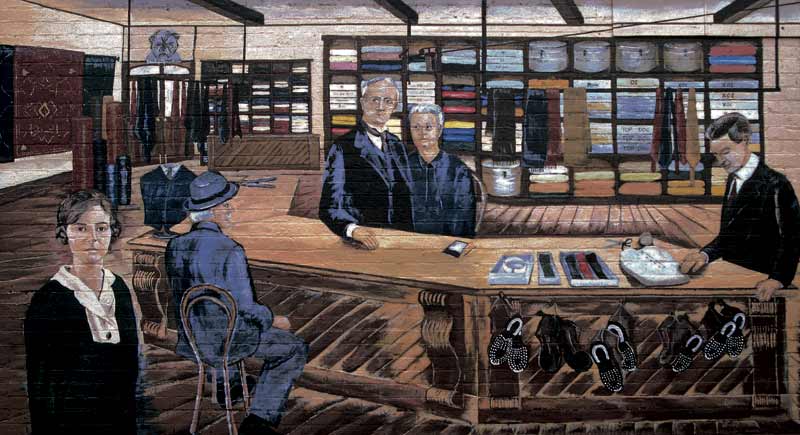 In 1926 Jesse and Nellie Slater’s old business friend, Mr Coles of Wilmot, came into their shop. He tried to persuade them to invest money in a new company, G J Coles Pty Ltd, which his sons were forming in Melbourne.
In 1926 Jesse and Nellie Slater’s old business friend, Mr Coles of Wilmot, came into their shop. He tried to persuade them to invest money in a new company, G J Coles Pty Ltd, which his sons were forming in Melbourne.
The new concept was of open display shopping, with nothing selling for more than two shillings and six pence. Mr and Mrs Slater couldn’t be persuaded to invest. The success of G J Coles Pty Ltd is legendary … Slater’s Country Store is still on the corner of Main and High Streets, Sheffield!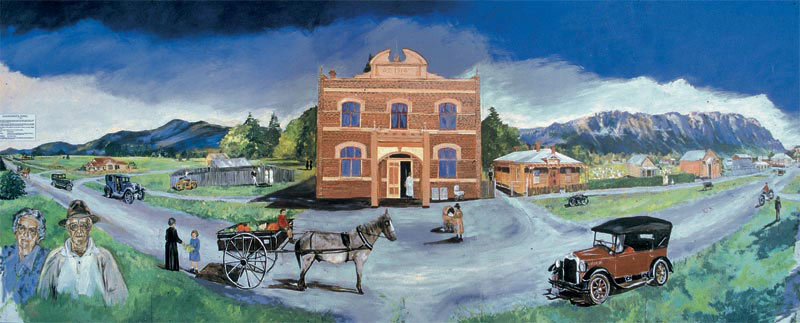
Laurie Mace grew up to be a respected and successful farmer in the district
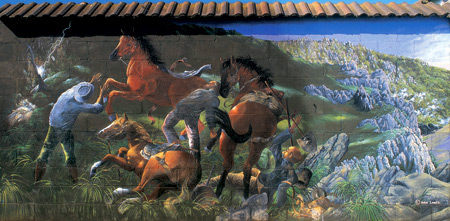
The mural shows the mountains in the park, as well as the often extreme weather conditions.
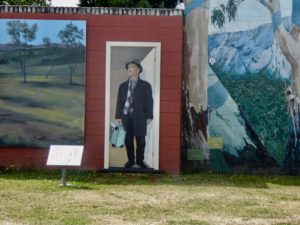
We made our way to the Apple Café checking out the murals as we went, only to find that it was closed. We ended up in the rather noisy and crowded Bakery Café where we had a surprisingly good scallop pie whilst wishing we had dined in the comfortable surrounds of Villarett!
Non-deterred, we headed on to the Alum Cliffs. The Alum Cliffs lie within the Alum Cliffs State Reserve and form a part of the Gog Range. Known by its aboriginal name Tulampanga, it was a place of particular social and spiritual significance to Aborigines because of the ochre to be found in that area of the Gog Range. Many tribes travelled to Tulampanga to obtain this highly prized material and for them this was a sacred celebration place and significant as the meeting place of three Aboriginal nations.
It is a relatively short walk – about 60 minutes return. It takes you on an all-weather path through forest,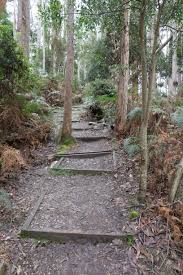
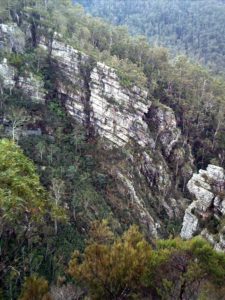 along a high, tapering ridge, until you reach the breath-taking lookout platform perched high above the Mersey River as it flows along the valley through the Alum Cliffs Gorge
along a high, tapering ridge, until you reach the breath-taking lookout platform perched high above the Mersey River as it flows along the valley through the Alum Cliffs Gorge 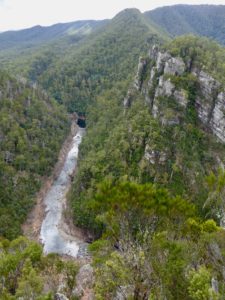 As the walk features a number of steps, and was quite slippery in places, I was glad of my trekking sticks.
As the walk features a number of steps, and was quite slippery in places, I was glad of my trekking sticks.
It was getting later in the day when we returned from our walk and, with visions of our comfortable retreat with its huge deep bath in mind, we decided to keep the Liffey Cliffs for another day and headed home via the Elizabeth Town Bakery for a crusty slow cooked beef pie.